 The 2017 Tour de France concluded this past Sunday after 23 days, 21 stages, 2,200 miles, and over 86 hours of riding. To put some perspective on the logistics behind the Tour, the race consisted of 198 riders, 167 of whom would finish the race. There are generally somewhere in the range of 10 to 12 million spectators that will line the roads during the course of the event. There are 40+ team cars, dozens of medical cars and ambulances, as well as a few additional official cars on the roads. There are close to 1,000 news agencies covering the event, which means thousands of reporters, photographers, broadcasters, and camera operators. And all of these people have to set up and break down broadcast booths and the rest of their equipment at the end of every stage, every day. While all of this sounds daunting, it’s nothing compared to what the athletes go through. This year’s winner was Chris Froome, who completed the race in 86:20:55, beating Rigoberto Urán by 54 seconds. This was Froome’s fourth overall Tour win, and his third in the last four years.
The 2017 Tour de France concluded this past Sunday after 23 days, 21 stages, 2,200 miles, and over 86 hours of riding. To put some perspective on the logistics behind the Tour, the race consisted of 198 riders, 167 of whom would finish the race. There are generally somewhere in the range of 10 to 12 million spectators that will line the roads during the course of the event. There are 40+ team cars, dozens of medical cars and ambulances, as well as a few additional official cars on the roads. There are close to 1,000 news agencies covering the event, which means thousands of reporters, photographers, broadcasters, and camera operators. And all of these people have to set up and break down broadcast booths and the rest of their equipment at the end of every stage, every day. While all of this sounds daunting, it’s nothing compared to what the athletes go through. This year’s winner was Chris Froome, who completed the race in 86:20:55, beating Rigoberto Urán by 54 seconds. This was Froome’s fourth overall Tour win, and his third in the last four years.
And now, on to the news.
- Amazon is going underwater
- Walmart bringing giant pickup kiosks to more stores
- Tesco takes on Amazon with same-day delivery across UK
- Truck speed-limiter rule stalls in Washington
- Rice exports in the news
- ZTO Express completes first drone delivery
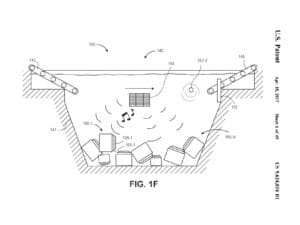 Amazon is going underwater. That’s not a clever way of saying that their business is in trouble. Instead, the company has recently filed a patent to store items in an underwater facility. The latest forward thinking patent filed by Amazon is in response to the growing need for warehousing space due to the rise of e-commerce. According to the patent, underwater warehouses would be filled with merchandise in airtight containers. The containers would be placed there by a combination of humans, conveyor belts, trucks, or planes. Each container would have a cartridge attached which controls the depth. When a customer orders that specific item, an acoustic wave would be sent to cartridge, which would release a balloon and send the container to the surface. Add this to the long list of Amazon’s outside the box thinking when it comes to the future of fulfillment.
Amazon is going underwater. That’s not a clever way of saying that their business is in trouble. Instead, the company has recently filed a patent to store items in an underwater facility. The latest forward thinking patent filed by Amazon is in response to the growing need for warehousing space due to the rise of e-commerce. According to the patent, underwater warehouses would be filled with merchandise in airtight containers. The containers would be placed there by a combination of humans, conveyor belts, trucks, or planes. Each container would have a cartridge attached which controls the depth. When a customer orders that specific item, an acoustic wave would be sent to cartridge, which would release a balloon and send the container to the surface. Add this to the long list of Amazon’s outside the box thinking when it comes to the future of fulfillment.
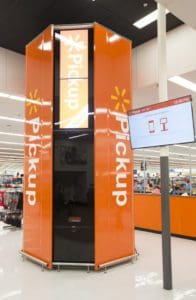 Late last year, Walmart tested out a new kind of in-store fulfillment process. The company built a giant tower that acts as a vending machine for online orders. The machine, named automatic pickup machine internally, allows the customer to enter the online order number into the machine, and the machine spits out the package like a vending machine. After a successful pilot, Walmart has announced that it will be rolling out the machines to 100 stores across the US. While the company has not named locations yet, customer reactions have been positive, and demand for the towers has increased.
Late last year, Walmart tested out a new kind of in-store fulfillment process. The company built a giant tower that acts as a vending machine for online orders. The machine, named automatic pickup machine internally, allows the customer to enter the online order number into the machine, and the machine spits out the package like a vending machine. After a successful pilot, Walmart has announced that it will be rolling out the machines to 100 stores across the US. While the company has not named locations yet, customer reactions have been positive, and demand for the towers has increased.
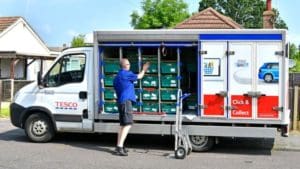 The UK’s largest grocery chain, Tesco, is expanding its same-day grocery delivery program. Currently, customers in London and the South East can have online orders delivered the same day. Now, Tesco is preparing to roll the program out to the rest of the UK by the end of August. Customers who order online by 1pm will be able to receive their groceries some time after 7pm on the same day. Shoppers in London and the South East will be able to access the same-day service seven days a week. Elsewhere it will be available from Monday to Saturday. This is a move that is directly related to Amazon’s expanding presence in the UK, and its rollout of same day grocery delivery.
The UK’s largest grocery chain, Tesco, is expanding its same-day grocery delivery program. Currently, customers in London and the South East can have online orders delivered the same day. Now, Tesco is preparing to roll the program out to the rest of the UK by the end of August. Customers who order online by 1pm will be able to receive their groceries some time after 7pm on the same day. Shoppers in London and the South East will be able to access the same-day service seven days a week. Elsewhere it will be available from Monday to Saturday. This is a move that is directly related to Amazon’s expanding presence in the UK, and its rollout of same day grocery delivery.
The push for speed limiters to be installed on heavy duty trucks has stalled in Washington according to the revised “unified agenda.” In the latest filing, the speed limiter mandate has fallen off the near-term agendas for both the Federal Motor Carrier Safety Administration (FMCSA) and the National Highway Traffic Safety Administration (NHTSA). This comes after a decade long push by safety advocates to have speed limiters on trucks. Had the rule passed, it would have required each vehicle, as manufactured and sold, to have its device set to a speed not greater than a specified speed and to be equipped with means of reading the vehicle’s current speed setting and the two previous speed settings through its onboard diagnostic connection. While this does not mean that a mandate will not go into effect at some point, it certainly will not be any time in the near future.
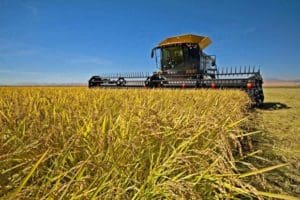 Japanese imports of American rice are on the rise. The US produces about 30 percent more rice than Japan. Combined with the fact that the Japanese government is propping up domestic prices by reducing supplies, and this is not overly surprising. While Japan caps the amount of rice imports, the demand is surging for cheaper and easy-to-cook foreign products. Calrose, grown in California, is the mainstay variety accounting for about 80% of the Japanese market for foreign rice consumed. This specific variety of rice is less sweet than Japanese rice which makes it perfect for bowl dishes which have sauce poured on top as well as for fried rice. The U.S. produces around 10 million tons or so of rice per year, and exports 3 million tons.
Japanese imports of American rice are on the rise. The US produces about 30 percent more rice than Japan. Combined with the fact that the Japanese government is propping up domestic prices by reducing supplies, and this is not overly surprising. While Japan caps the amount of rice imports, the demand is surging for cheaper and easy-to-cook foreign products. Calrose, grown in California, is the mainstay variety accounting for about 80% of the Japanese market for foreign rice consumed. This specific variety of rice is less sweet than Japanese rice which makes it perfect for bowl dishes which have sauce poured on top as well as for fried rice. The U.S. produces around 10 million tons or so of rice per year, and exports 3 million tons.
Speaking of rice exports, for the first time ever, the US can now export rice to China. Officials from the two countries recently finalized a protocol that allows for the first ever shipment of rice to China, the world’s largest rice consumer, importer, and producer. This comes on the heels of another agreement that re-opened the Chinese market to US beef exports. These are just the first steps in President’s Trump’s efforts to reduce the trade deficit with China; but a lot more will need to be done to reduce the $347 billion deficit.
 Speaking of China, the country continues to be on the leading edge when it comes to drone deliveries. Earlier this week, ZTO Express, a leading express delivery company in China, announced that it successfully completed its first trial delivery using a drone in an industrial park in Zhejiang Province. The drone, which was developed by a local drone developer and customized for ZTO, flew 8.7 miles from a sorting facility in Le Qing county, Zhejiang Province to the office building of an enterprise customer located in an economic development park in the same county. The drone used in the trial has a maximum range of 18.6 miles, comes equipped with a 6.6 gallon container, can carry a maximum load of 22.0 pounds, and is preprogrammed to fly to its destination and does not require a remote control.
Speaking of China, the country continues to be on the leading edge when it comes to drone deliveries. Earlier this week, ZTO Express, a leading express delivery company in China, announced that it successfully completed its first trial delivery using a drone in an industrial park in Zhejiang Province. The drone, which was developed by a local drone developer and customized for ZTO, flew 8.7 miles from a sorting facility in Le Qing county, Zhejiang Province to the office building of an enterprise customer located in an economic development park in the same county. The drone used in the trial has a maximum range of 18.6 miles, comes equipped with a 6.6 gallon container, can carry a maximum load of 22.0 pounds, and is preprogrammed to fly to its destination and does not require a remote control.
That’s all for this week. Enjoy the weekend and the song of the week, Queen’s Bicycle Race.














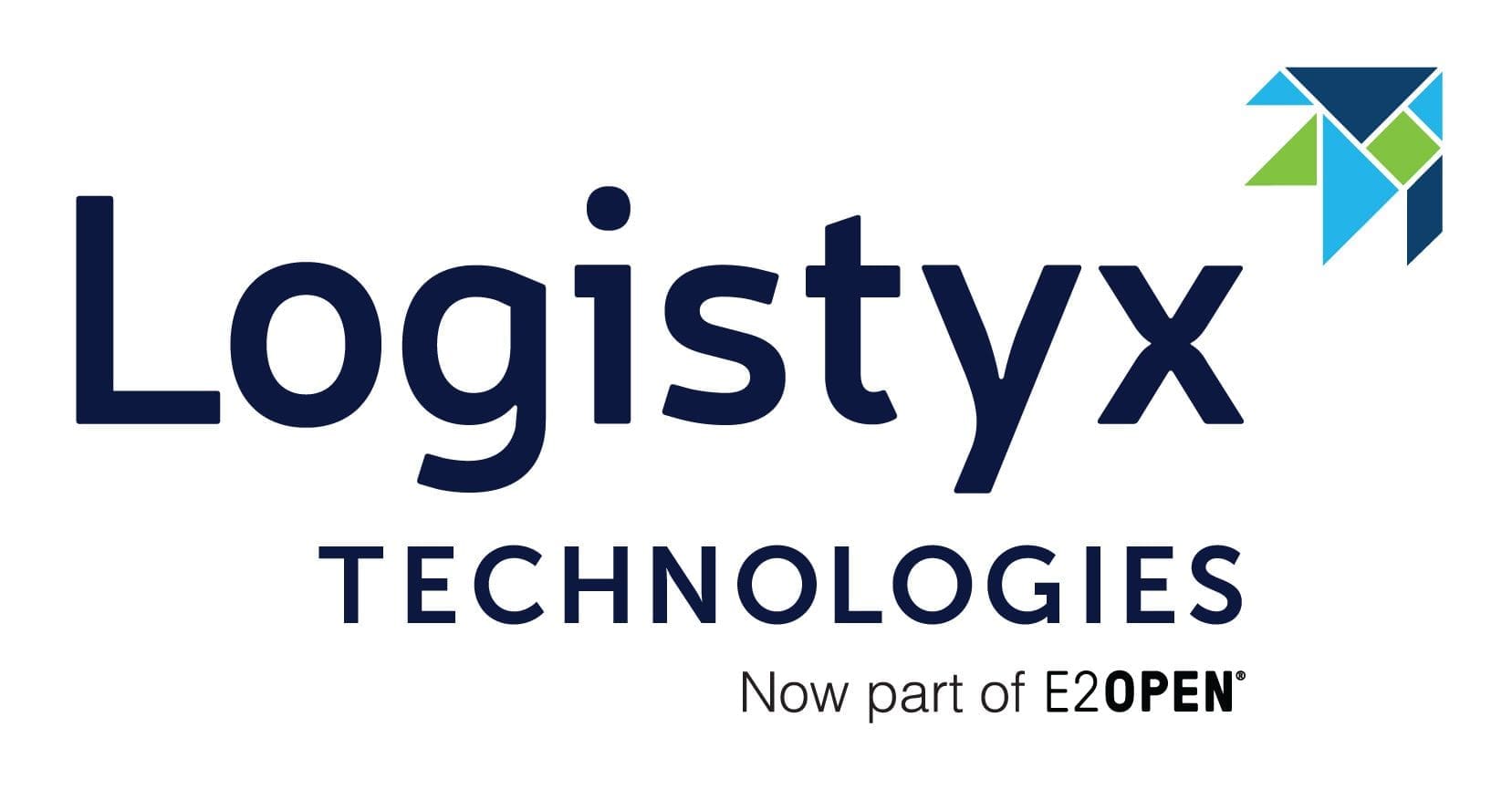

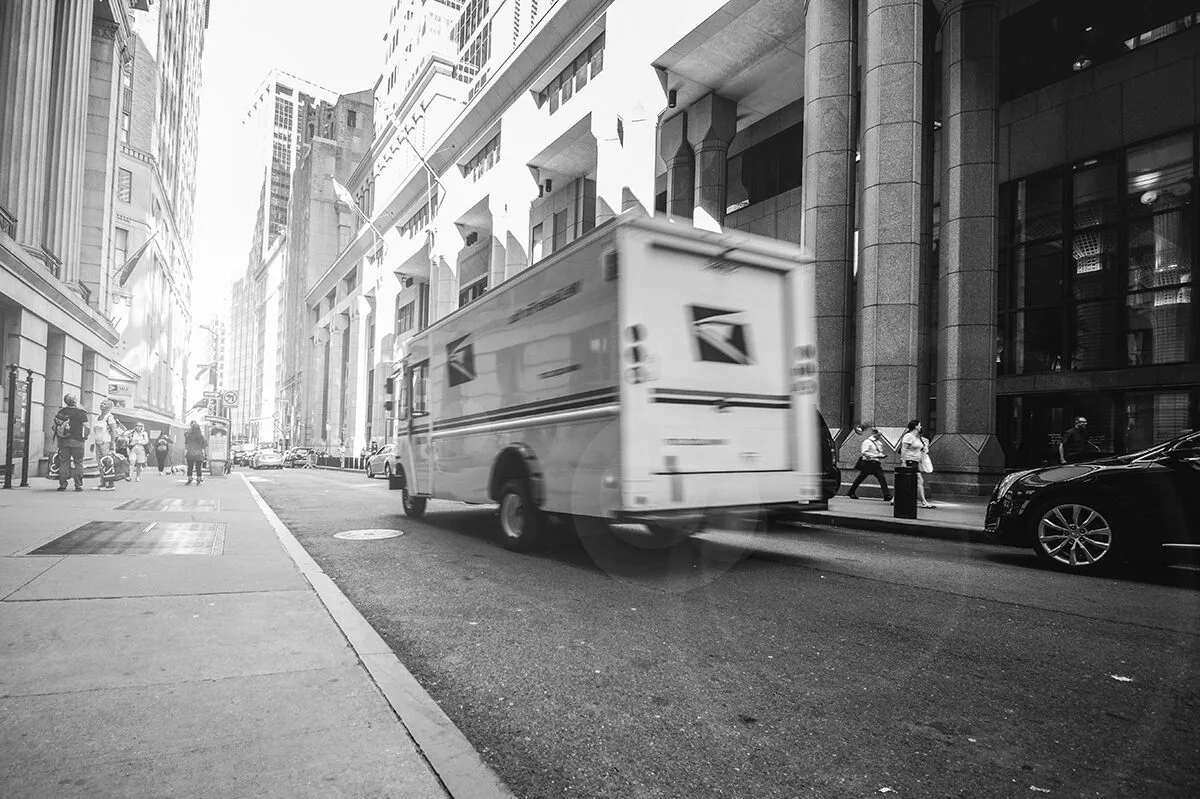

Leave a Reply